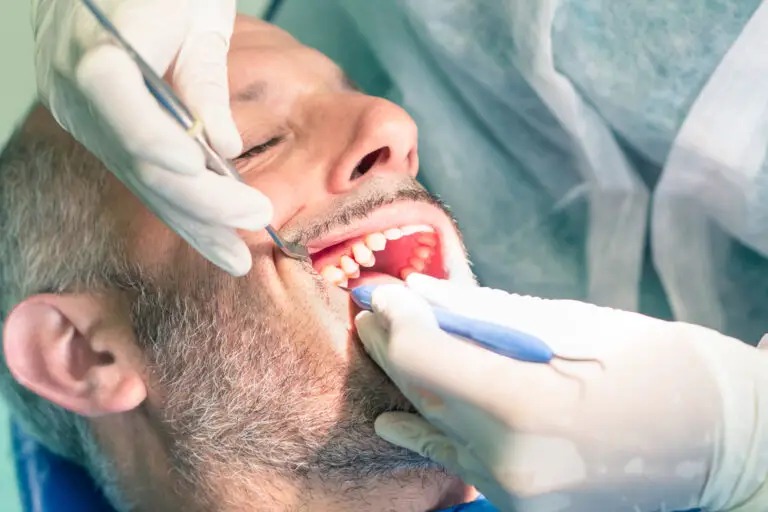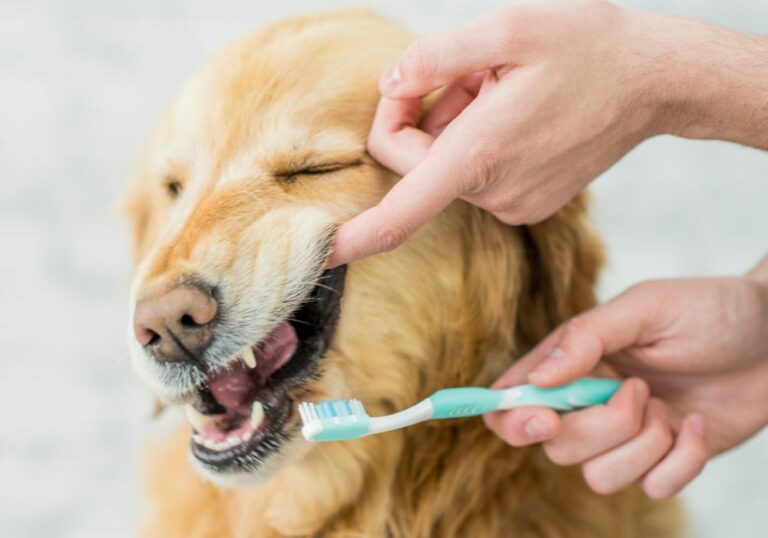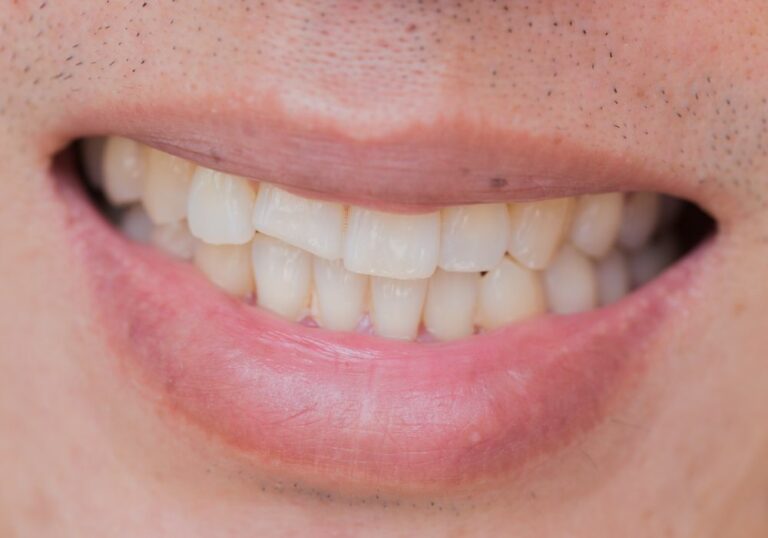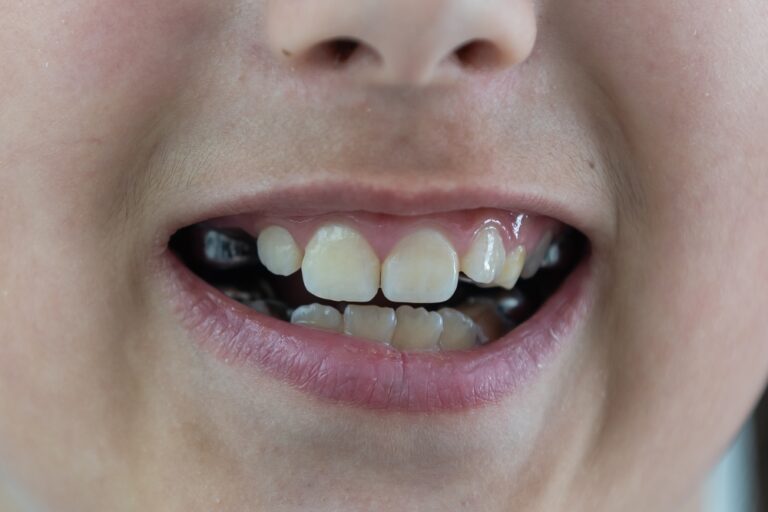Wisdom teeth, also known as third molars, are the last teeth to erupt in the back of the mouth. They usually emerge between the ages of 17 and 25. For most people, wisdom teeth are vestigial structures that no longer serve a purpose. In fact, these teeth often cause problems due to lack of space and impaction. So why do wisdom teeth still develop in modern humans if we don’t need them anymore?
The Evolutionary History of Wisdom Teeth

Wisdom teeth were beneficial for our early ancestors. Throughout human evolution, our jaws and teeth evolved in response to changes in diet and food preparation techniques.
Wisdom Teeth in Our Hominin Forebears
The earliest hominins dating back 4-7 million years ago, like Sahelanthropus and Ardipithecus, had small brains, projecting faces and powerful jaws filled with teeth suited for coarse raw vegetation. They lacked distinct molars, and instead had uniform teeth optimized for a lifetime of heavy chewing.
By 2-3 million years ago, hominins like Australopithecus had evolved larger brains and smaller jaws and teeth. Their back teeth became differentiated into premolars for shearing and broad molars for grinding, though still covered in thick enamel. This allowed them to incorporate seeds, nuts, tubers and scavenged meat into their heavily plant-based diet.
The first members of the Homo genus, emerging around 2.5 million years ago, possessed even more human-like teeth. Homo habilis had smaller incisors and large molars compared to their diminutive premolars. This allowed them to utilize stone tools to process food.
By 1.5 million years ago, Homo erectus exhibited an almost modern dental formula and jaw size. Their massive molars and fully erupted wisdom teeth helped them chew the tough wild game, tubers, nuts and seeds that constituted their diet.
Optimal Jaws and Teeth for Survival
Our early ancestors evolved jaws and teeth specialized for the rough wild foods they were adapted to eat. Powerful jaws with plenty of room allowed them to fully utilize their back molars, including wisdom teeth, giving them survival and reproductive advantages:
- Broad, thickly enameled molars could pulverize coarse vegetation and nuts efficiently.
- Molars and premolars formed tight occlusal surfaces that functioned like a mortar and pestle when chewing.
- Jaws were deep and muscular to effectively grind up fibrous plant matter.
- Third molars provided additional grinding surface area further back in the mouth for optimal mastication.
- Well-aligned wisdom teeth were used throughout life as the rest of the teeth wore down over time.
For early hominins and humans living in the wild, wisdom teeth were clearly beneficial to be able to fully utilize harder, tougher food sources they subsisted on. But as the human diet and lifestyles transformed, the need for these teeth rapidly diminished.
The Shrinking Human Jaw
Over the last 250,000 years, the human jaw has decreased in size and robustness. This trend of jaw reduction accelerated in the Holocene as new food preparation techniques emerged.
Reduced Jaw Size in Early Modern Humans
Fossil evidence indicates even the earliest anatomically modern Homo sapiens 200,000 years ago had slightly smaller jaws and teeth than older hominins like Homo erectus. This allowed for lighter chewing muscles, an adaptation some anthropologists think facilitated the development of our advanced cognitive abilities.
By around 36,000 years ago, anatomically modern hunter-gatherers were processing food by grinding nuts and grains between stones to make flour. Their jaws and teeth continued evolving to be smaller and less robust. They still needed to chew hard or dried meats, roots and gathered foods, so molars were still large and wisdom teeth functional.
Rapid Reduction in the Holocene
True jaw downsizing took off during the Neolithic Revolution with the advent of agriculture. From around 10,000 years ago, farming of cereal grains, pulses and some vegetables and fruits meant softer diets processed by milling or cooking. Enamel thickness decreased and jaw muscles weakened as less chewing force was required.
By the Bronze Age, only 5,000 years ago, crowded, malaligned wisdom teeth were evident in human remains, though not yet as problematic. Jaws were clearly too small to fit these unneeded teeth. During the modern era as flour milling, cooking, canning and other food processing methods became widespread, jaws shrunk to be nearly identical to humans today in size but lacking the muscularity of our ancestors.
Why Jaws Became Smaller
Several dietary and technological innovations explain our diminishing jaws over the millennia:
- Cooking – Heating food like meats and fibrous tubers breaks down connective tissues, making them softer and easier to chew. Less jaw strength is required.
- Cutting tools – Using sharp blades to slice, dice and process foods pre-chewing means less overall chewing is needed to eat.
- Ground food – Grinding grains and nuts into flour or butter reduces particle size before eating so jaws don’t have to grind as much.
- Pottery – Boiling meat and vegetables in early ceramic pots further softens foodstuffs, lessening mastication forces.
- Agriculture – Cereal grains have less dense tissues than the wild plants consumed by hunter-gatherers, requiring less chewing power to eat.
- Selection pressure – In densely populated settlements, less robust jaws may have been sexually or evolutionarily favored for unclear reasons.
Humans no longer needed to chew as much or as forcefully, so our jaws have atrophied rapidly. But has evolution caught up by eliminating our unnecessary wisdom teeth?
Wisdom Teeth Persist Despite Uselessness

Though human jaw size decreased markedly in a relatively brief evolutionary timespan, the instructions for forming wisdom teeth still remain encoded in our DNA from millions of years ago. This leads to impacted and misaligned wisdom teeth that crowd the modern shrunken jaw.
Wisdom Tooth Development
Wisdom teeth begin developing around week 8 in utero from thickened epithelium at the back of the embryonic jaw, as a product of ancient genetic pathways that specify identity of each tooth type. The initial patterning stage activates genes like PAX9, MSX1 and AXIN2 which drive third molar tissue organization and buds.
Developing wisdom teeth then undergo the same stages as all other tooth types:
Initiation -> Proliferation -> Histodifferentiation -> Morphodifferentiation -> Apposition -> Eruption
This embryonic development predisposes wisdom teeth to form even when there is inadequate space, given our modern jaw dimensions. Extraction is often necessary.
Lingering Evolutionary Benefits?
A few possible reasons why natural selection has not eliminated wisdom teeth genes entirely:
- Wisdom teeth may still offer some intermittent utility depending on diet or other factors. Just enough to sustain the traits genetically.
- Tooth development pathways are deeply embedded and interrelated, so suppressing wisdom teeth alone is difficult or genetically complex.
- Random mutations reactivating wisdom teeth offset selective disappearance.
- Not enough time for selection to act relative to other pressures like cultural diet changes.
- Genes linked to both wisdom teeth and other needed functions constrains their loss.
Regardless of the evolutionary persistence, wisdom teeth remain highly problematic given our current jaw anatomy.
The Rise of Impaction Issues
Lack of sufficient space and function makes wisdom teeth prone to impaction. This can lead to painful complications like infection, decay, and damage to neighboring teeth.
Types of Impaction
There are a number of ways wisdom teeth may become impacted:
- Vertical – Tooth is unable to fully emerge through the gums and is positioned in a vertical upright path.
- Mesioangular – Tooth is angled towards front of the mouth, often against the 2nd molars.
- Horizontal – Tooth is laying flat and sideways under the gums. This exerts pressure on rear molars.
- Distoangular – The wisdom tooth grows at a backward incline, pointing to the back of the mouth.
- Soft Tissue – Gum tissue overlies the erupting tooth, blocking it partially.
Each impaction type presents difficulties as the wisdom teeth compete for space and put pressure on surrounding teeth and bone.
Complications of Impaction
When wisdom teeth fail to fully emerge due to impaction, some common issues that arise are:
- Pericoronitis – Infection of gum tissue surrounding the impacted crown of a partially erupted wisdom tooth. Causes swelling, pain.
- Tooth Decay – Impaction makes wisdom teeth hard to clean and prone to unchecked cavities and decay.
- Gum Disease – Impaction allows more plaque buildup, increasing periodontal disease risk.
- Root Resorption – Pressure from impacted wisdom teeth can gradually dissolve roots of adjacent teeth.
- Cysts or Tumors – Fluid filled sacs or growths occasionally form around impacted wisdom teeth.
- Tooth Displacement – Erupting wisdom teeth may displace other rear molars from their sockets.
By the 20th century, regular problems with impacted wisdom teeth resulted in the advent of prophylactic wisdom tooth extractions.
Wisdom Tooth Extractions Now Commonplace

With all the modern difficulties posed by wisdom teeth impaction, their surgical removal has become standard practice to avoid future problems. By young adulthood it is recommend to extract these vestigial teeth.
Indications for Extraction
Some symptoms that may indicate extraction of wisdom teeth:
- Recurrent pericoronitis gum infections
- Untreatable tooth decay from impaction
- Cysts or benign tumors forming near wisdom teeth
- Periodontal disease in adjacent teeth
- Root resorption of second molars on x-ray
- Orthodontic concerns – crowding or blocked tooth movement
- Prophylactic removal where impaction likely
When possible, dentists prefer to extract wisdom teeth before any complications set in. This prevents need for more complex surgery later on.
Examining Impaction via Imaging
Dentists use imaging techniques like panoramic x-rays or CBCT scans to evaluate for wisdom tooth impaction:
- Vertical, horizontal or angular impaction
- Proximity to nerves and other roots
- Extent of bone covering tooth
- Curvature of impacted roots
- Signs of cysts or other pathology
This allows the dentist to plan proper positioning and surgical technique for extraction.
Methods of Wisdom Tooth Removal
Various techniques are employed to extract impacted wisdom teeth depending on position:
- Simple extraction – Removal of an erupted wisdom tooth without tissue flap or bone removal. Used when enough of crown is exposed.
- Surgical extraction – Incisions made to reveal the tooth to cut it into sections for removal of impacted tooth. May require bone removal.
- Coronectomy – Crown cut off but roots left in place on certain lower impactions to avoid nerve injury.
An oral surgeon is usually called in for difficult impactions requiring extensive bone removal or sectioning. Otherwise extraction can be performed by general dentists.
The Future Loss of Wisdom Teeth?

Wisdom teeth are more problematic than beneficial in the modern age. Could evolution eventually select for their disappearance, or will they persist indefinitely?
Pressures Favoring Wisdom Tooth Loss
Some factors that may lead to waning prevalence or completeness of wisdom teeth expression:
- Diet – As foods get softer and more processed, jaws are under less growth pressure, accelerating reductions.
- Medicine – Removal of disease-prone impacted wisdom teeth improves survivability and fitness.
- Culture – Population mobility spreads diet and behaviors that may not favor large jaws and teeth.
- Orthodontics – Jaw realignment and dental crowding reduction lessens the need for space that wisdom teeth require.
However, a total loss of the instructions for wisdom tooth formation requires significant evolution of the precise genetic pathways involved.
Pressures Sustaining Wisdom Teeth
Some influences that might maintain wisdom teeth or prohibit their disappearance:
- Mutation – Random mutations could reactivate wisdom teeth in some individuals or populations, offsetting selective disappearance.
- Stabilizing selection – Existing at low problematic levels without much selection against them may sustain wisdom teeth.
- Diet variations – Some populations may retain tougher or rougher diet components that maintain jaw growth and third molar utility.
- Genetic linkage – Wisdom tooth genes are likely integrated with other vital functions in complex ways that prevent easy elimination.
- Timescales – Relatively rapid diet changes may outpace gradual evolutionary genetic shifts.
The impacts of modernity on jaw and tooth sizes are still actively unfolding. Only time will tell if wisdom teeth persist as troublesome vestiges or eventually fade away.
Conclusion
Wisdom teeth were beneficial for chewing tough wild foods for our ancient hominin ancestors and early humans. But a rapidly shrinking jaw size due to dietary changes and food processing techniques over the Holocene period rendered them largely unnecessary. Though no longer adaptive, wisdom teeth still develop as relics from millions of years of evolution. But without sufficient room they frequently become impacted and prone to infections and dental problems. Surgical removal of these useless third molars has thus become common practice. Ongoing evolutionary trends and pressures will determine if wisdom teeth persist into humanity’s distant future despite their obsolescence. For now, they remain curious remnants of our evolutionary past found in the back of modern jaws, often causing more trouble than they’re worth.
Frequently Asked Questions
Why do wisdom teeth still grow in if we don’t use them?
Wisdom teeth form from genetic and developmental instructions evolutionarily encoded when they were beneficial for our ancestors. Though human jaws subsequently shrunk due to dietary changes, the old wisdom teeth genes remain embedded in our DNA, causing these vestigial teeth to still grow in where there is no room or need for them.
What age do wisdom teeth become an issue?
Problems with wisdom teeth often first arise in the late teens and early 20s as they attempt to erupt into the fully mature jaw which has inadequate space. This frequently impedes their emergence, causing impaction and associated issues like infections and crowding.
Can wisdom teeth be left in if they grow in normally?
Properly aligned wisdom teeth that fully emerge may possibly be left in place if they remain functional, disease-free and do not crowd other teeth over time. But as preventive dental philosophy tends towards prophylactic removal, most dentists still favor extracting even problem-free wisdom teeth in young adulthood due to high future complication rates.
How are impacted wisdom teeth removed?
Surgical extraction techniques like making incisions to reveal the buried tooth, removing obstructing bone and sectioning the tooth into pieces are used to remove impacted wisdom teeth. The oral surgeon may even need to cut and disassemble the tooth within the socket for difficult impactions.
What evolutionary factors caused wisdom teeth to become obsolete?
Reduced dietary chewing demands due to food processing innovations like cooking and grinding allowed our ancestor’s jaws to shrink over time. This loss of sufficient rear jaw space happened relatively rapidly evolutionarily, such that wisdom teeth now tend to crowd and cause problems in our smaller modern jaws rather than serve any useful purpose.







